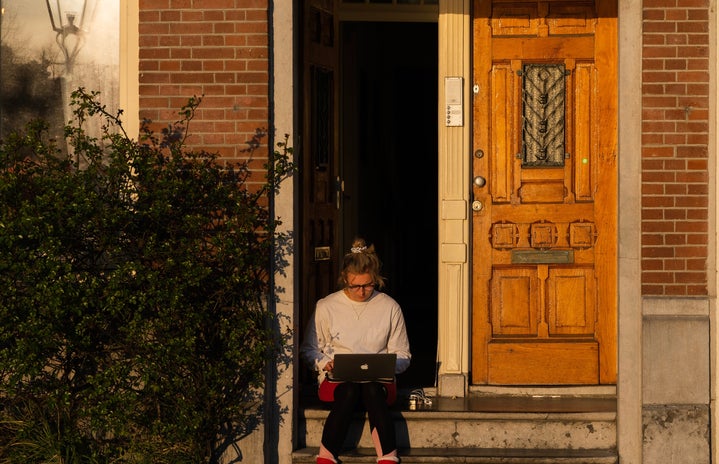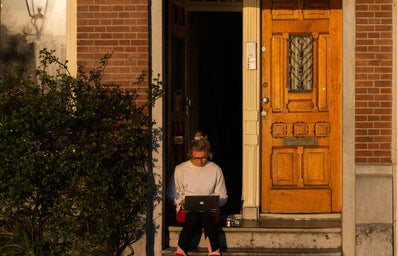A two-story home located in a safe neighborhood, with room for a family to grow. A front yard, a backyard, and a swimming pool. It’s the Californian homeowner’s dream…but it remains just that — a dream, and the prospect of owning such a property has become increasingly difficult for Californians in the past 50 years. According to news organization Cal Matters, “In the late 1960s, the average California home cost about three times the average household’s income. Today, it costs more than seven times what the average household makes.” While becoming a homeowner is a feat in itself, factors like unlivable wages, low socioeconomic status, lack of housing, debt, inflation, and immigration status, only complicate the process of home ownership. A poll conducted by Cal Matters indicated that nine out of ten Californians consider housing affordability a problem. When generalized to the population of California, this is an alarmingly high percentage of the population and only solidifies the need for change and correction. Each person affected by California housing has their own perspective and personal challenges, and Caroline Flores* is willing to share hers.
Caroline Flores is a full-time line cook at one of the most popular restaurants in Downtown Davis. For the past 23 years, she has been bouncing around central California in the cities of Porterville, Ceres, Modesto, and Sacramento in restaurant managerial and line-cook positions. She currently lives in Woodland, in a home she procured during the Covid-19 Housing crisis. Instead of competing with college kids and professors for housing in the city of Davis, where the median home cost is $1,206,955, she decided to settle in the neighboring town of Woodland. This two-story home with three bedrooms, a font-yard, a backyard, and swimming pool is one of Caroline’s biggest accomplishments. However, it was not achieved without sacrifice and hardship. In fact, the endeavor of becoming a homeowner has actually resulted in an onslaught of more pressures for Caroline and her family.
To begin, she has one car that she shares with her ex-husband and daughter, which they all use to commute to work in Davis, six days a week, to work in the restaurant. All three of them work at the same Davis restaurant, and her ex-husband works a second job at another location of the same chain restaurant in Woodland. Caroline and her husband are both line-cooks, while their daughter is a waitress. In addition to the three of them, Caroline’s son, his girlfriend, and her granddaughter also live in the house. The three rooms are allocated to her, her daughter, and her son and his girlfriend. Her ex-husband sleeps on the couch in the living room, and her granddaughter sleeps with her or her daughter. This is how Caroline makes ends meet amidst the California housing crisis.
Caroline’s ex-husband contributes to the bills each month, which between the mortage and utilities come out to $4,000. Their household also spends $600 on groceries every two weeks. Caroline’s 23-year-old daughter had previously been contributing to the payment of bills; however, the birth of her daughter and health conditions involving her liver have resulted in accumulated debt and hospital bills. Her salary as a waitress is $16.50 an hour, but even with sick pay, she would not be making as much as she normally would with tips. In December of 2023, Caroline’s ex-husband also had to take time off of work due to health complications and poor heart health. While their employer does offer paid time off, they are only guaranteed 24 hours a year. Considering the shift lengths that Caroline works, this would only give her two days before she would begin to suffer financially. Caroline is now the main provider within the household, and the person who secures housing for the five other people in her home.
Caroline works full-time and earns a salary of $20 per hour, and her ex-husband is paid the same rate. Because their combined gross yearly income is over $100,000, they do not qualify for government aid or Medi-Cal. This, by no means, however, means they are living comfortably. Caroline, during her unpaid break, revealed, “If I didn’t work for six days in a row, I couldn’t pay my bills. We would lose our home.” She paused for a moment, before dejectedly stating, “It sucks…I am just so exhausted.” While a great understatement, Caroline’s ability to prevail year after year and support her family is admirable but precarioius. For most people in her situation, coming down with the flu or an injury would result in eviction, foreclosure, shelters, or homelessness.
It should never be so difficult to simply live and get by, especially when working full-time. Yet today, these jarring scenarios are the reality for many Californians.
Sources:
*Name has been changed as anonymity has been requested.
https://calmatters.org/explainers/housing-costs-high-california/
https://www.payscale.com/cost-of-living-calculator/California-Davis



